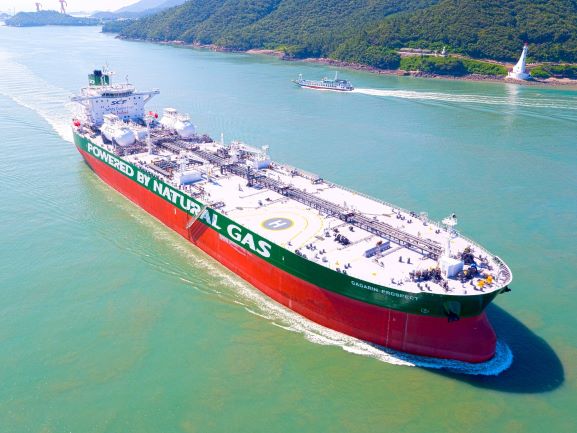Archives
Freight News, Sea
HHI Group, DNV GL present green tankers of the future
[ December 23, 2020 // Gary G Burrows ]DNV GL, the world’s leading classification society, and HHI Group, the world’s largest shipyard, have teamed up to embark on the development of future-proof tanker designs. In a recent “Green Tankers towards 2050” industry webinar, attended by more than 250 participants from shipping companies around the world, DNV GL and HHI Group presented the results of new joint research and explained how eco-friendly maritime solutions can help shipowners and managers to cope with stricter environmental regulations now and in the future.
The joint research was initiated by a memorandum of understanding (MOU) signed at Gastech trade fair in Houston 2019, when DNV GL and HHI agreed to develop low and zero carbon solutions for shipping. The results of the MOU were presented by lead researchers from HHI Group companies Korea Shipbuilding & Offshore Engineering (KSOE), Hyundai Heavy Industries (HHI) and Hyundai Mipo Dockyard (HMD) in a virtual format, co-hosted by DNV GL from their headquarters in Høvik, Norway.
“Shipowners are faced with many uncertainties in the rapidly changing marketplace,” said Seong-Yong Park, COO and SEVP of HHI Group. “We believe our research results, including proven engineering solutions and alternative fuels, will support them in developing their future strategy for ship operations and fleet renewal.”
During the webinar, DNV GL and HHI Group experts explained the recent development of regulations covering the greenhouse gas emissions from vessels, including the introduction of the design index for existing vessels (EEXI) and a new Carbon Intensity Indicator, which are due to enter into force in 2023. To respond to these regulations, HHI Group introduced their range of eco-friendly ships that are equipped with alternative fuel technologies and energy-reducing systems, among them 40 LNG dual-fueled ships already delivered or under construction.
“The International Maritime Organization (IMO) is strengthening environmental regulations, including a 50% reduction in ship greenhouse gas emissions by 2050 compared to 2008,” commented H. J. Shin, Head of Future Ship Research Department at KSOE. “We will help the shipping industry to reach these ambitious goals by taking a leading position in the eco-friendly maritime era through research and development.”
By applying DNV GL’s data-based carbon robust model to its very large crude carrier (VLCC) and Medium Range (MR) tanker ships, HHI Group found that an LNG fuel propulsion system in combination with advanced energy saving devices (ESDs) can enable a vessel to meet the new Carbon Intensity Indicator over its expected lifetime.
“It is important to use alternative fuels like LNG and technological solutions that are available now, and not wait until 2030 or beyond”, stressed Y. H. Chung, Head of Initial Design Department at HMD. “Our joint research has shown that LNG as ship fuel combined with other energy saving devices can make a vessel both environmentally and economically fit for the next two decades at least,” said Mr Chung.
“Since ESDs mainly have an impact on fuel consumption during sailing, the benefits are greater for large vessels such as VLCCs, which spend more days operating at sea,” explained Christos Chryssakis, Business Development Manager at DNV GL – Maritime. “These ships are also less sensitive to price variations when it comes to selection of LNG as fuel. This is because the capital expenditures are paid back faster due to a higher fuel consumption.” For smaller vessels with lower fuel consumption, such as MR Tankers, a higher price differential between very low sulphur oil (VLSFO) and LNG was required to pay back the initial investment. Therefore, these vessels were more sensitive to volatile fuel prices, he added.
“We have no clear vision of the zero-carbon ship in deep sea shipping yet,” said Trond Hodne, Senior Vice President Business Development at DNV GL – Maritime. “As we work hard towards the zero emission vessel, the industry also needs to make newbuilding decisions today. Thus, we should not make perfect the enemy of good. As demonstrated by HHI Group and our experts, we have energy efficient designs and technologies at hand that will enable ships to meet the IMO emission trajectories through their entire lifetime. These highly efficient vessels are likely to be attractive to charterers and investors today, and even more so if a price is put on CO2.”

Tags: DNV GL






